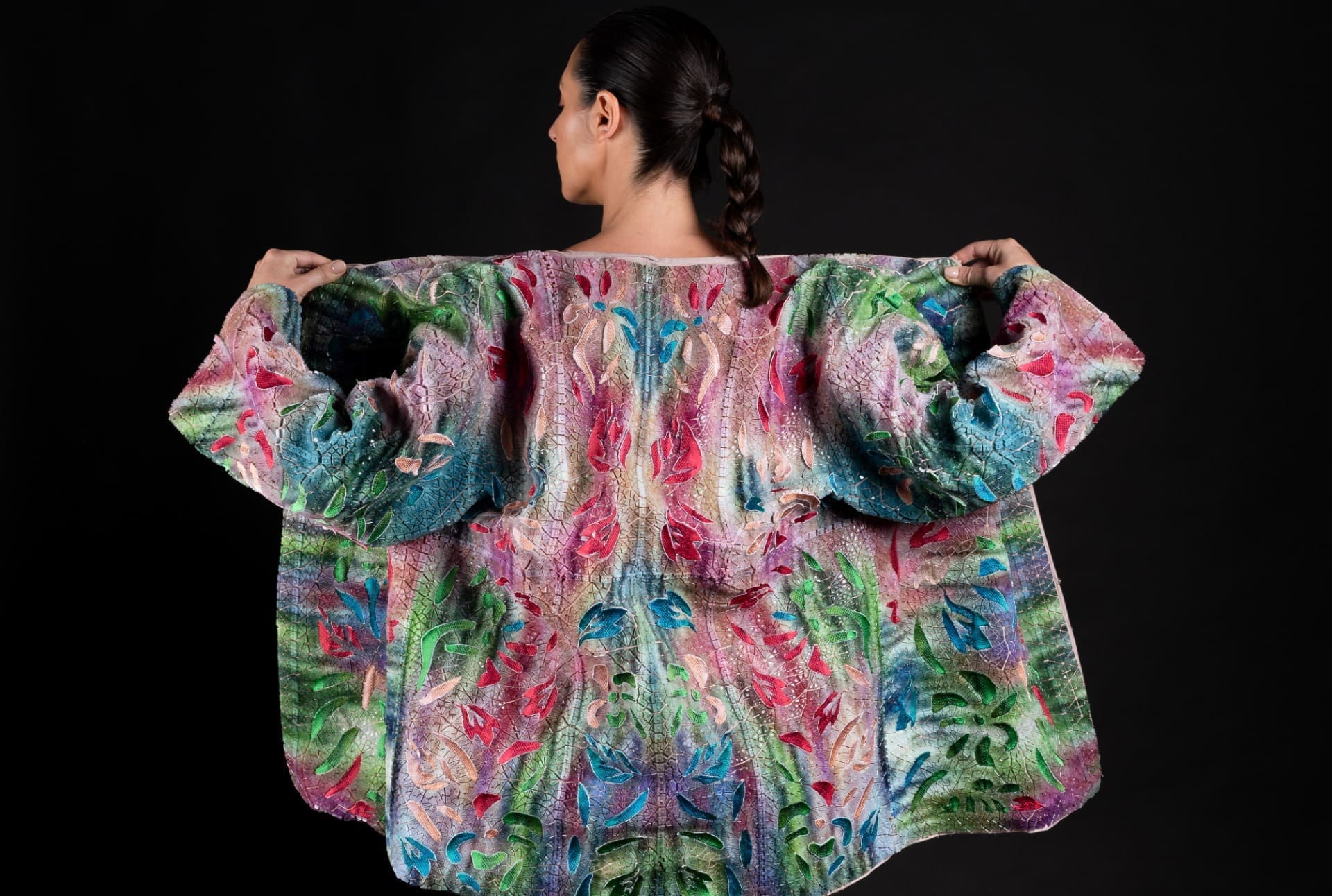The partnerships are part of the European Union-funded Re-FREAM research project, which brings together artists, designers, engineers and scientists to explore the use of 3D printing within the fashion industry.
“When I look at today ‘s fashion landscape, I want to bring a new way of designing – getting away from mass manufacturing to personalised design,” Goldstein said. “3D printing has always provided the possibility of customising production in ways that were not feasible before, but to actually create a modern way of manufacturing involves a different kind of textile.”
3D printing in the fashion industry
Offering creative freedom, 3D printing has played an increasingly significant role within recent fashion events such as New York City’s 2019 Met Gala which saw well-known celebrities model outfits 3D printed by GE Additive and Protolabs. Meanwhile, pioneering designers like Iris Van Herpen, who debuted her new 3D printed face jewelry collection ‘Cellchemy’ at Paris Fashion Week 2019, have inspired the take-up of 3D printing by many emerging designers including Mingjing Lin and House of Anesi founder Stephania Stefanakou.
Despite these creative applications of 3D printing technology to create different items attached to fabric garments, or a whole piece of clothing itself, 3D printing techniques directly on apparel are rarely used due to the difficulty of the process.
During New York Fashion Week (NYFW) 2019, Stratasys, in partnership with renowned fashion designers threeASFOUR and Travis Fitch, announced the ability to print 3D directly onto clothing.
The company hopes this demonstration of its PolyJet technology ‘s capabilities will give the world a glimpse of what fashion design could look like when 3D printing technology and fabric comfort are combined.

The collaborations
At the virtual ARS Electronica Festival, Koerner announced their new collection, ARID. ARID is designed around nature-inspired geometries, and textile connectivity and adaptability with 3D-printed multi-color parts. The collection comprises of 38 3D printed pieces that can be coupled into a variety of different looks to create a full dress.
Using PolyJet technology from Stratasys, the visual drawings were printed directly on recycled fabrics in vibrant colours. Specific sizes can be easily adapted using modified 3D printed connectors that are obtained from the wearer’s 3D scans. All seams are linked with 3D printed joinery, which according to Stratasys is the first time that 3D printed connectors have been used in textile assembly.
Goldstein ‘s work has concentrated on integrating art techniques with 3D direct-to-textile printing to create a Japanese-style cover. Inspired by Asian art embroidery and textile painting, her kimono style reflects the Japanese ‘ikat’ colouring process made possible by implementing an algorithm composed of the kimono’s 3D body scan and converted into the printed surface during the process of printing.
This allows textiles to be leveraged for the first time in 3D printed fashion as the structure of a fabric, allowing designers to put unique designs onto the market that are not feasible with other approaches.
“It’s fashion, it’s important that we continually optimize and evolve to introduce new design forms,” said Goldstein. “During the past year, I experimented with numerous different fabrics and technologies to incorporate 3D printing within textiles. Achieving this milestone takes us away from 2D design and opens up a world of wearable 3D garments.”
Possibilities and potential
Stratasys, Koerner and Goldstein ‘s recent collaborations have shown the ability for direct-to-textile 3D printing to be a major game-changer in the design industry. The aim of Re-FREAM is to completely digitise end-to – end design workflows, allowing for the prospect of decentralised production and mass customization that many now consider to be the future of fashion.
According to Stratasys, commercial interest in its PolyTechnology is already at an advanced stage and pilot-testing is underway.
SOURCE: 3D Printing Industry

